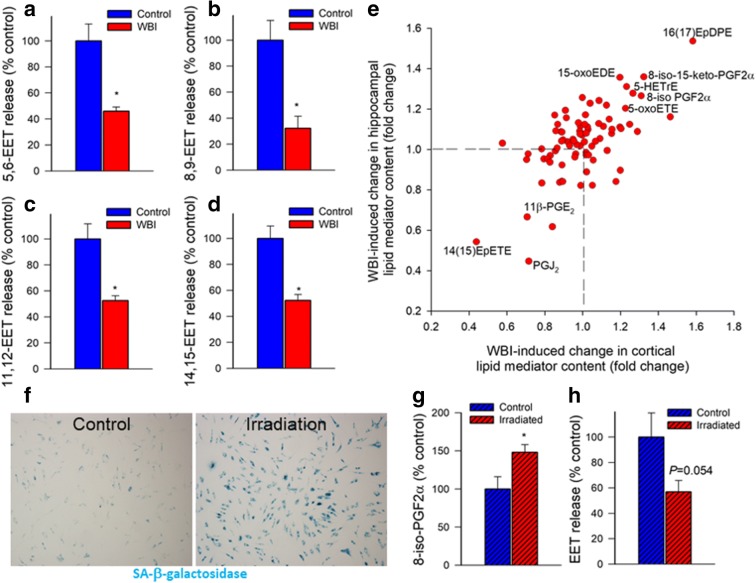Fig. 5.
WBI treatment of mice and irradiation-induced senescence in cultured astrocytes impair synthesis/release of eicosanoid gliotransmitters. Panels a–d Production of the eicosanoid gliotrasmitters 5,6 EET (a), 8,9 EET (b), 11,12 EET (c), and 14,15 EET (d) in glutamate-activated brain slices from control and WBI-treated mice, measured by liquid chromatography/mass spectrometry (LC/MS) (n = 6 in each group; *P < 0.05 vs. control; see “Materials and methods”). Panel e WBI-induced changes in lipid mediator content in the mouse cortex (x axis) and hippocampus (y axis). Lipid mediators were quantified in fresh-frozen, non-perfused brain samples using LC/MS (see “Materials and methods”). Some lipid mediators with significant (P < 0.05) and consistent WBI-induced changes are highlighted. Summary data (n = 6 for each data point). Panel f γ-Irradiation induces cellular senescence in cultured rat astrocytes. Astrocytes were irradiated (6 Gy) and stained for senescence-associated (SA)-β-galactosidase activity 7 days post irradiation. Panels g–f Irradiated, senescent astrocytes exhibit increased level of the oxidative stress marker 8-iso-PGF2α (panel g) and decreased glutamate-induced release of EET gliotransmitters (panel h). *P < 0.05 vs. non-irradiated controls. Data are mean ± SEM (n = 6 for each data point)

